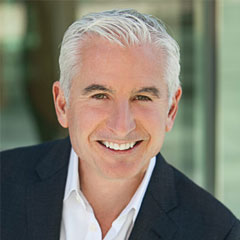
Don Neal
There’s a reason why “The Voice,” “America’s Got Talent,” “American Idol,” and football are among the top, most-watched programming on TV. Sure, they have amazing production value, and they’re well-packaged, promoted, and choreographed, but that’s not why we love them.
We love them because of what they don’t have. They don’t have an ending that is predictable, known, or manufactured. All the glitz, glam, and special effects aside, they have one thing most of us want — an element of surprise. We crave that sense of anticipating what may happen, and we seek out what feels real, what feels authentic.
The professional-meetings industry goes to great lengths to make sure that there are no surprises, and that there is little controversy, provocation, or risk — for good reason. There are four factors that contribute to this: senior leaders’ concern about alienating members; volunteer programming committees that gravitate toward the norm and patterns of the past; lack of experience in how to design an event or meeting that has built-in uncertainty and controversy; and, for many of you reading this, the fear of taking a risk, making a mistake, and going too far.
What’s missing from almost every association and society meeting is surprise, debate, intellectual friction, and intentionally highlighting the controversy that exists in every industry and community. I say this not to criticize but to inspire.
Let’s separate surprise from debate for a moment. To add what they call “intentional fun” at their events, the organizers of one society event work with the host destination CVB to plan for an activity before networking breaks. The surprises have ranged from a Scottish clan battle in the aisles of the general session, to an opera singer and a juggler. What they share in common is that they create a memorable moment, giving attendees something to talk about during the break. Those moments can serve as conversation starters. In terms of adding an element of controversy, what if you held an Oxford-style debate on the risk of a two-party political system to our democracy?
What if a team of people from outside your industry put forth topics that made your leadership uncomfortable? You know what these gnarly issues are. Suppose one-quarter of your session formats were planned by people under the age of 30 — what would they do differently? What if your exhibitors allowed your audience to vote on the most engaging and interesting company at the trade show?
Ask yourself: If you had to design a program that had to compete with “Monday Night Football” or “The Voice,” what would grab and hold the attention of your audience?
As a meeting planner, you’re a content producer, live media designer, the Steven Spielberg of your organization. Have you considered what would be the plot of your next meeting? What would be the cliffhanger, who are the stars of the event, what will surprise your audience, and what will they be tweeting about?
Here are three ways to get started:
- Bring your leadership and entire event community together to decide what kind of event you really want to host next year. Get buy-in.
- Pick topics, issues, and programming that are real, not watered-down, and not available anywhere else. Audition the speakers who will be exploring this content. Become more authentic.
- Open up the format for more debate, controversy, and provocation, and allow for the unexpected. I’m seeing this happen at more events. Be the first in your industry to set the bar high. You’ll find the result to be, well, surprisingly powerful.
I’m seeing this happen at more events. Be the first in your industry to set the bar high. You’ll find the result to be, well, surprisingly powerful.

